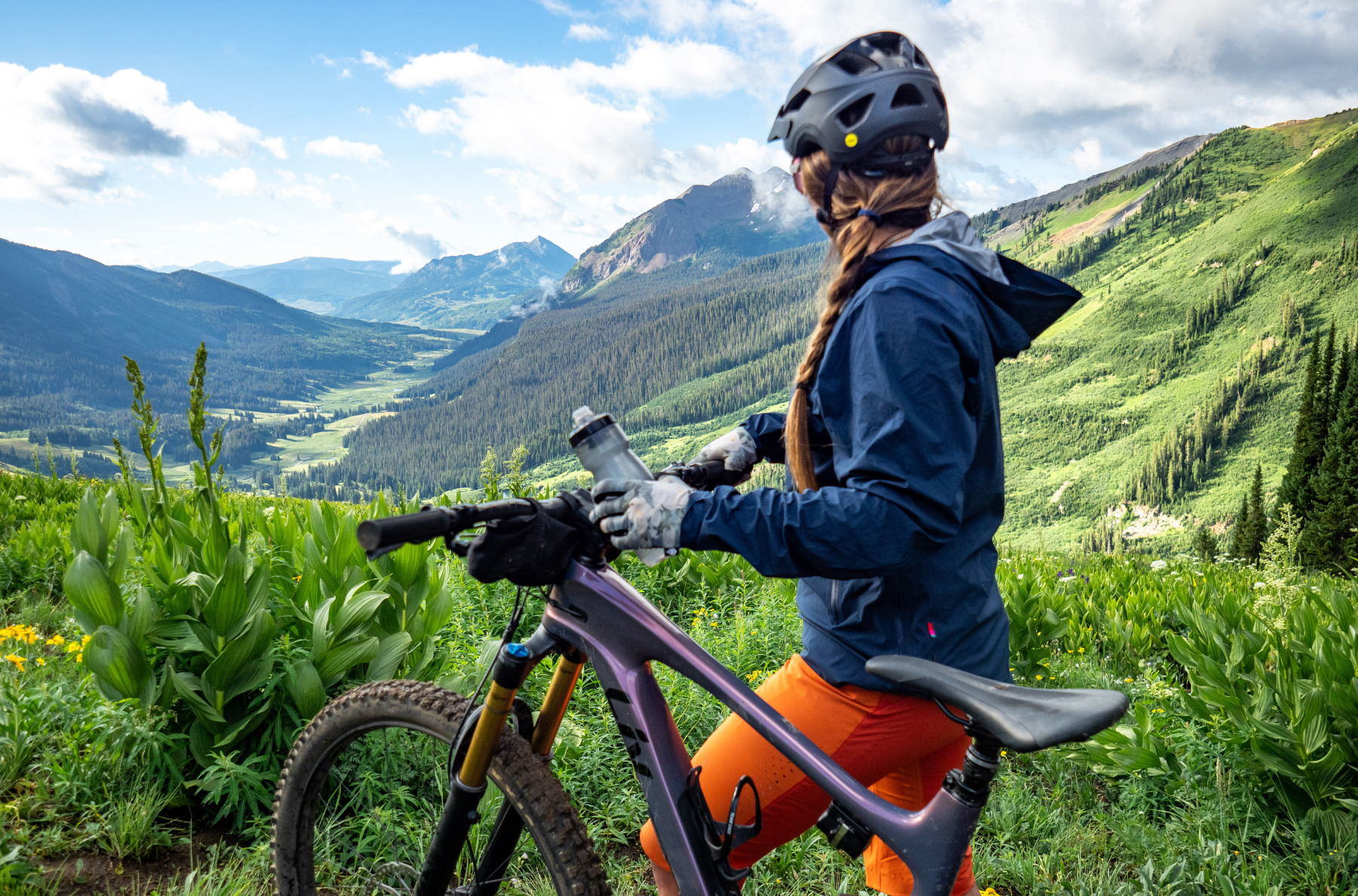
Intro
Most of our reviews are pretty long — and take a long time to produce — because we want to provide enough info for you to actually determine whether the gear we tested will work well for you.
But we get asked to check out an increasingly wide range of products, and sometimes, we just want to tell you about something we’ve been using and loving lately.
So that’s where this monthly series — Stuff We Like — comes in, where we keep you current on a broad range of stuff we’re currently digging.
And if there’s something you love that you think we ought to check out, drop us a note in the comment section below.
North St. Vancouver Daypack
MSRP: $135
David Golay: I’ve been using the North St. Vancouver Daypack as my everyday laptop bag for a while now, and I’m a very big fan. The layout is relatively simple, with a zippered main pocket that contains a lightly padded laptop sleeve at the back, and a smaller also-zippered internal pocket on the front flap with a key clip. The weather-resistant zipper for the main pocket runs the full length of the sides of the pack, meaning that there’s no room for a typical side-positioned water bottle holster, but instead, there’s one on the front face of the pack, which I actually really like. The downside is that it’s not really accessible while you’re wearing the pack, but it’s also very secure, and with the bottle weight (frequently by far the heaviest thing I have in it) centered on the face of the pack, it’s better balanced and isn’t prone to twisting the pack side to side as side-mounted bottles can. A standard-size Nalgene bottle fits, but is pretty snug; anything slightly smaller in diameter goes in easily, while still being secure.
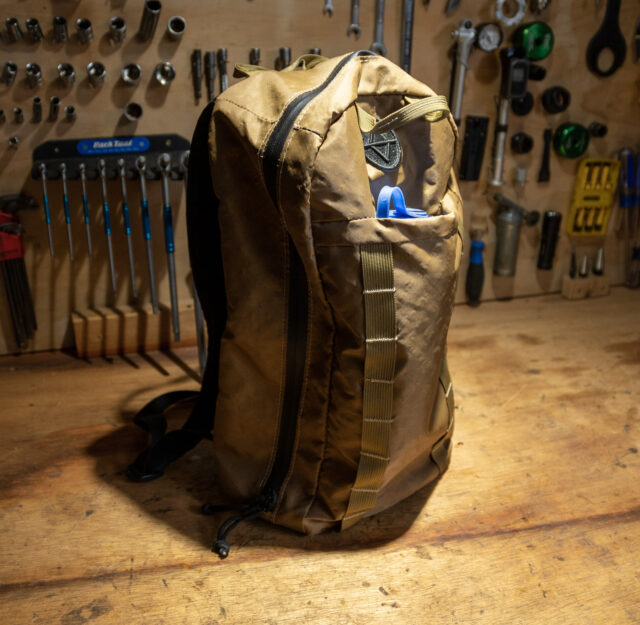
And that’s about it, at least for the standard features. But the Vancouver Daypack also has a pair of velcro strips sewn onto the front of the laptop sleeve, and North St. offers a whole bunch of add-on pockets and other dividers that you can stick on there if you’re so inclined. Check out their website for the various options.
Like all of North St.’s packs, the Vancouver is sewn in Portland, Oregon from recycled materials, and it feels especially well-built and robust. The design is simple but thoughtful; the ability to customize the pocket arrangement is nice (I tend to not like packs that try to over-organize the internals, with a specific pocket for everything imaginable); and the Vancouver is lightweight, compact, and comfortable to wear so long as you’re not carrying a massive amount of weight in it.
I would caution that the laptop sleeve isn’t huge — smaller 15’’ laptops fit nicely (e.g., a current-gen Dell XPS 15 goes, but a 2015 MacBook Pro 15 doesn’t quite), with the width being more of a limitation than the thickness. But if your computer isn’t huge, and you want a relatively small, lightweight bag to carry it and a few other things on a day-to-day basis, the North St. Vancouver is really nice.
Kara Williard: Like David, I have been using the Vancouver Daypack as my daily laptop bag for the past couple of months. When I first switched to it, I was a little concerned that the smaller size and relative simplicity might be a problem (compared to larger backpacks I had been using previously), but I have since become a huge fan of the simple, yet well-thought-out design. It is very sleek but still provides everything needed to keep my daily stuff organized.
The laptop sleeve fits my small 13” MacBook Air very well, and I still have plenty of other space in the bag. I recently found myself using it to commute by bike to the gym. Even though it doesn’t have a hip belt, its compact design felt secure and comfortable on my gravel bike, and without too much weight in it, I found it to be a pretty comfortable option for commuting by bike.
I especially like the handles on the top of the backpack, which make it easy to grab and carry (more like a briefcase) when I don’t want to sling it over my shoulder. The front pocket is great for a water bottle, and the smaller top pocket works well for a wallet, headphones, etc.
I have been pretty pleased with the simplicity and versatility of the Vancouver Dapyack, the fact that it’s made in the US from recycled “EcoPak” waterproof sailcloth is a bonus. The outer fabric feels super burly, and I have a feeling this daypack will last a long time.
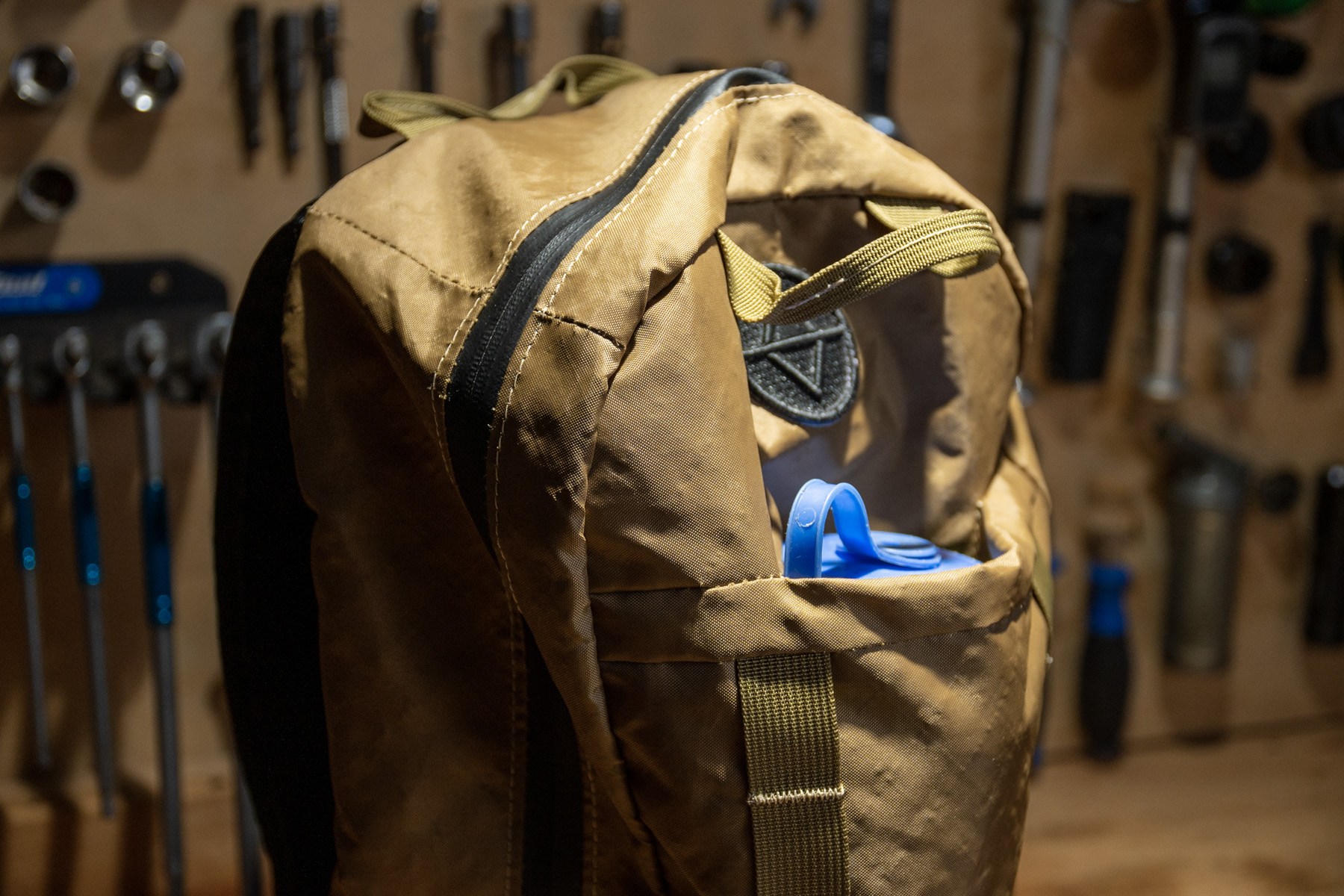
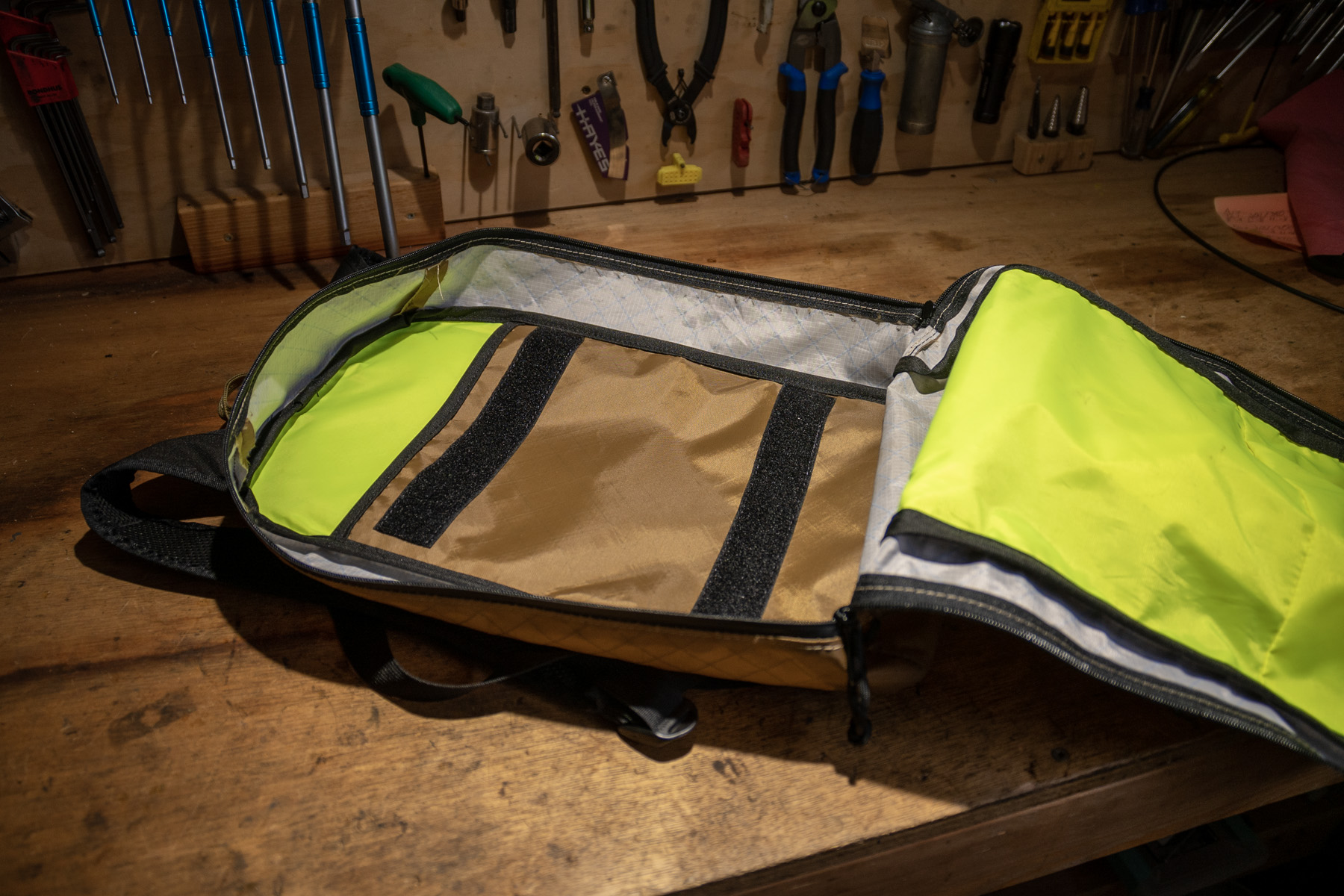
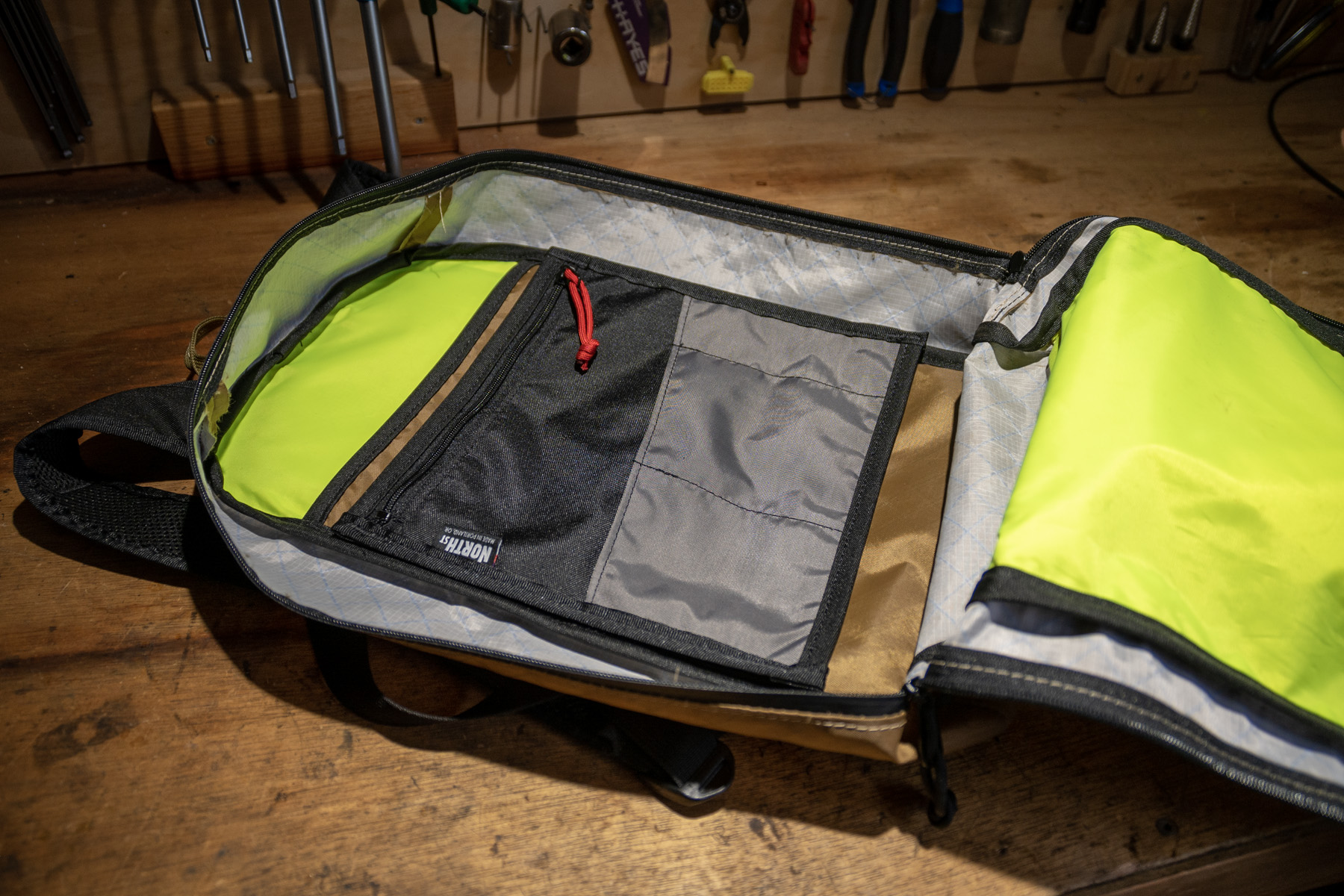
Lao Gan Ma Spicy Chili Crisp
MSRP: ~$6.99 (7.4 oz jar)
David: I’ve been going down what has thus far been a moderately deep dive into various types of jarred chili crisps. There are some fancier specialty versions that I really like, at least in certain applications (shoutout to the Fly By Jing Sichuan Chili Crisp, which is earthier tasting, a bit spicier, and has a hint of Sichuan numbing spice to it), but the far-less-expensive and more readily available Lao Gan Ma Spicy Chili Crisp remains my go-to standby, and is super versatile in a ton of different applications.
Now, first things first: despite the words “spicy” and “chili” appearing in the name, this stuff isn’t actually very spicy. If I’m cooking something that I want to have some heat to it, I’m using some fresh (or occasionally dried) chilis that pack some punch to get there. What the Lao Gan Ma Chili Crisp is actually delivering is flavor, and it’s delicious.
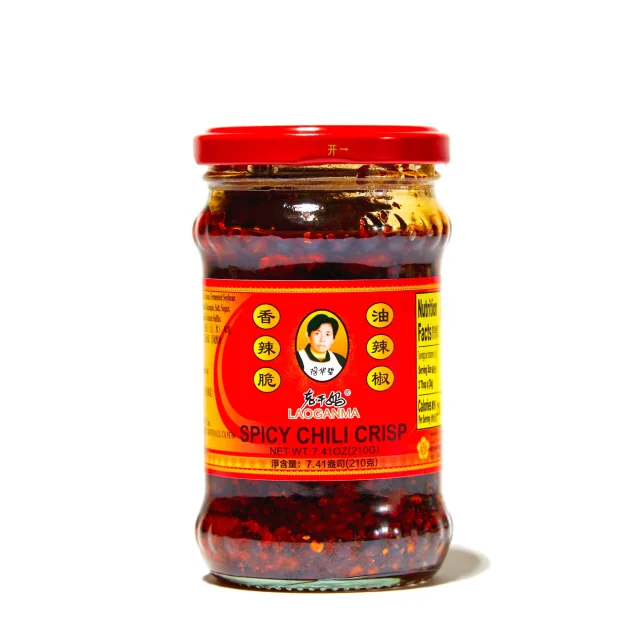
My original primary use for the chili crisp was punching up things like stir fries or fried rice dishes, but it’s so much more versatile than that. It’s great as a sandwich topping (and pairs especially well with avocado), it’s awesome mixed into mac and cheese, and so on. Go wild, it’s good on all kinds of stuff.
And unlike some of the fancier versions of chili crisps, the Lao Gan Ma one is available at a lot of grocery stores (usually in the Asian section) and fairly widely online. It’s become an essential staple in my house, and it’s very much worth trying — whether you’re actually going to cook with it, as I do a lot, or just use it as a condiment.
Salomon Sense Ride 5
MSRP: $140
Jed Doane: Our running reviewer Scott Vinsel already posted a great full review of this shoe, but I’ve been wearing these for a few months now and thought I’d add my own praise here. I found the Sense Ride 5 to be an accessible, lightweight, and comfortable trail runner that does most things well. My narrow feet are generally happy in Salomon shoes, and I’d agree with Scott that these are slightly wider than other Salomons I’ve worn in the past, which is a step in the right direction for the average foot shape (Salomon’s shoes have historically been quite narrow). There’s no fancy carbon rock plate and there are certainly burlier options out there for really rough trails, but the Sense Ride 5’s thick foam proved quite protective underfoot and was very comfortable on smooth surfaces.
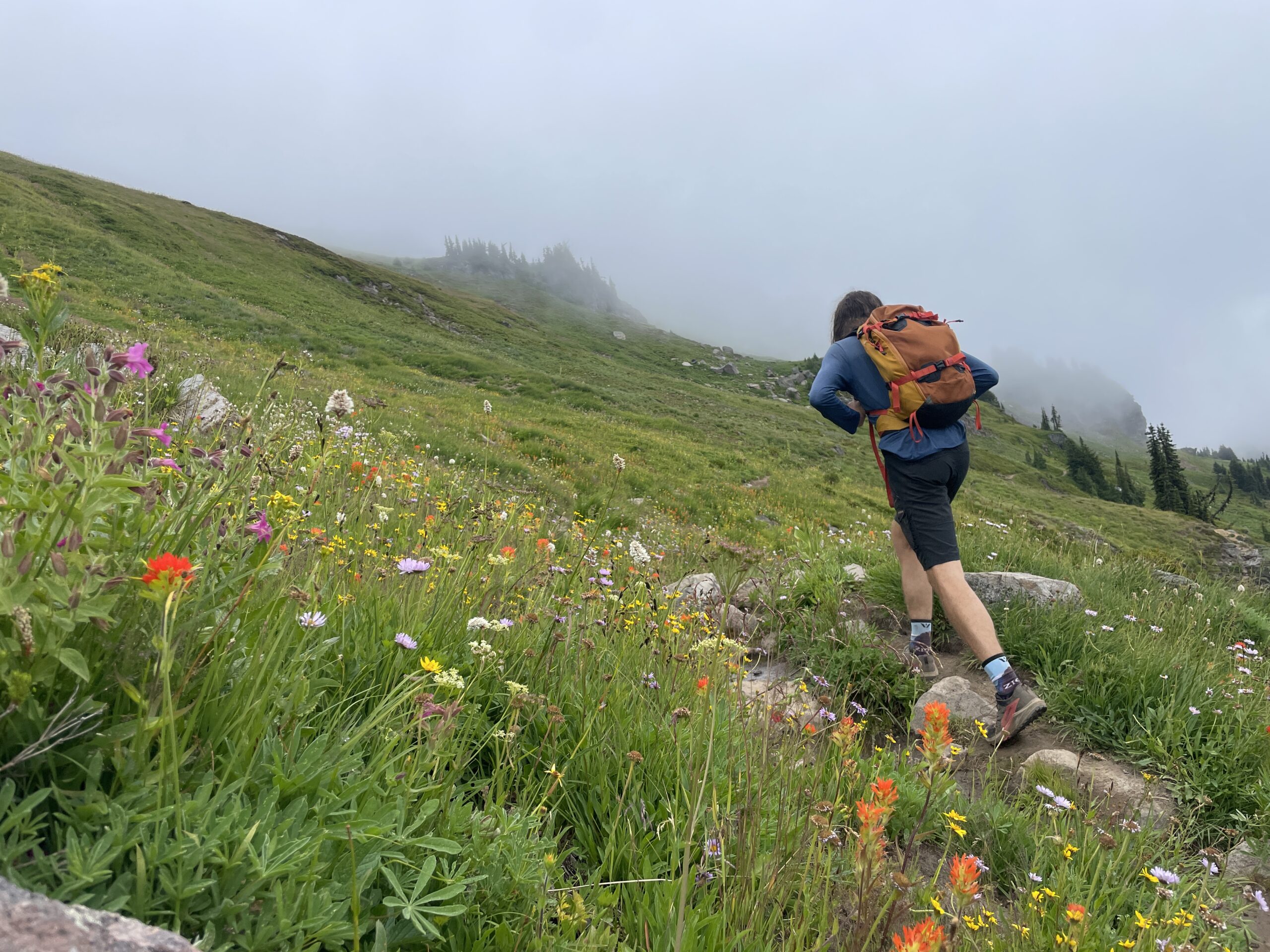
Patagonia Storm10 Jacket
MSRP: $329
Luke Koppa: On the topic of rainwear, we’ve recently been testing several pieces from Patagonia — both outside in the mountains and in the lab, through our Blister Labs collaboration with Western Colorado University and the University of Colorado. We’ll have a lot more to say about this in the future; as an apparel dork who spent four years studying and designing outerwear in college, I’m really excited about it.
Anyway, part of this experiment involves what we’ve always done — just going out and using this stuff. We first got several Patagonia shells (Storm10, Torrentshell 3L, Triolet, & Storm Shift) during an unusual dry spell in the Gunnison-Crested Butte valley, but since then, we’ve thankfully shifted back into our more typical summer weather patterns. I.e., still lots of sun, but with almost daily thunderstorms rolling in during the afternoons and evenings. They’re notoriously unpredictable, which is why I pretty much always carry with me some sort of ultralight rain shell, such as the Patagonia Storm10.
Patagonia makes a ton of waterproof hardshells, but the Storm10 is their lightest and most packable “generalist” rain shell, which is just what I want from May through November. It packs down to roughly the size of an average avocado and weighs right around 250 grams, which makes it easy to bring along any time I’m biking, fishing, or hiking.

However, it’s still a fairly high-end 3-layer shell, featuring Patagonia’s in-house H2No waterproof / breathable membrane (with a 20D recycled nylon ripstop face fabric and 7D tricot backer). It also still includes adjustments for the hem and hood (which I can just barely get over my bike helmet); chest and dual handwarmer pockets; and functional velcro cuff adjustments.
As far as performance goes, the Storm10 so far feels roughly average for an ultralight 3L shell. It’s prevented water from getting inside, even during several hours of consistent rain, and it breathes a bit better than most cheaper alternatives I’ve used. It’s not exceptional in terms of breathability, so like most shells in this ultralight class, I tend to throw it on once the rain starts and then take it off once it stops, unless I’m staying pretty sedentary (e.g., fishing). Its fit is on the slimmer side, but I can still fit a light midlayer (e.g., Patagonia R1 Air) underneath the size Medium and haven’t found myself complaining about lack of range of motion while biking, fishing, or hiking (I’m 5’8”, 155 lbs / 173 cm, 70 kg).
I’ve also been using Patagonia’s less expensive and slightly bulkier Torrentshell 3L jacket ($179), which is a great alternative if packability isn’t as much of a priority and you want to spend notably less. Their burlier, PFC-Free-Gore-Tex Triolet Jacket is what I’ll be breaking out more often when abrasion resistance and long-term water resistance are higher priorities than packability (typical of my Autumn adventures). But for now, the Storm10 has been just about perfect as my “just in case” shell during the summer. And I’m very much looking forward to saying more about how these pieces have performed at Blister Labs once we’ve compiled that data.
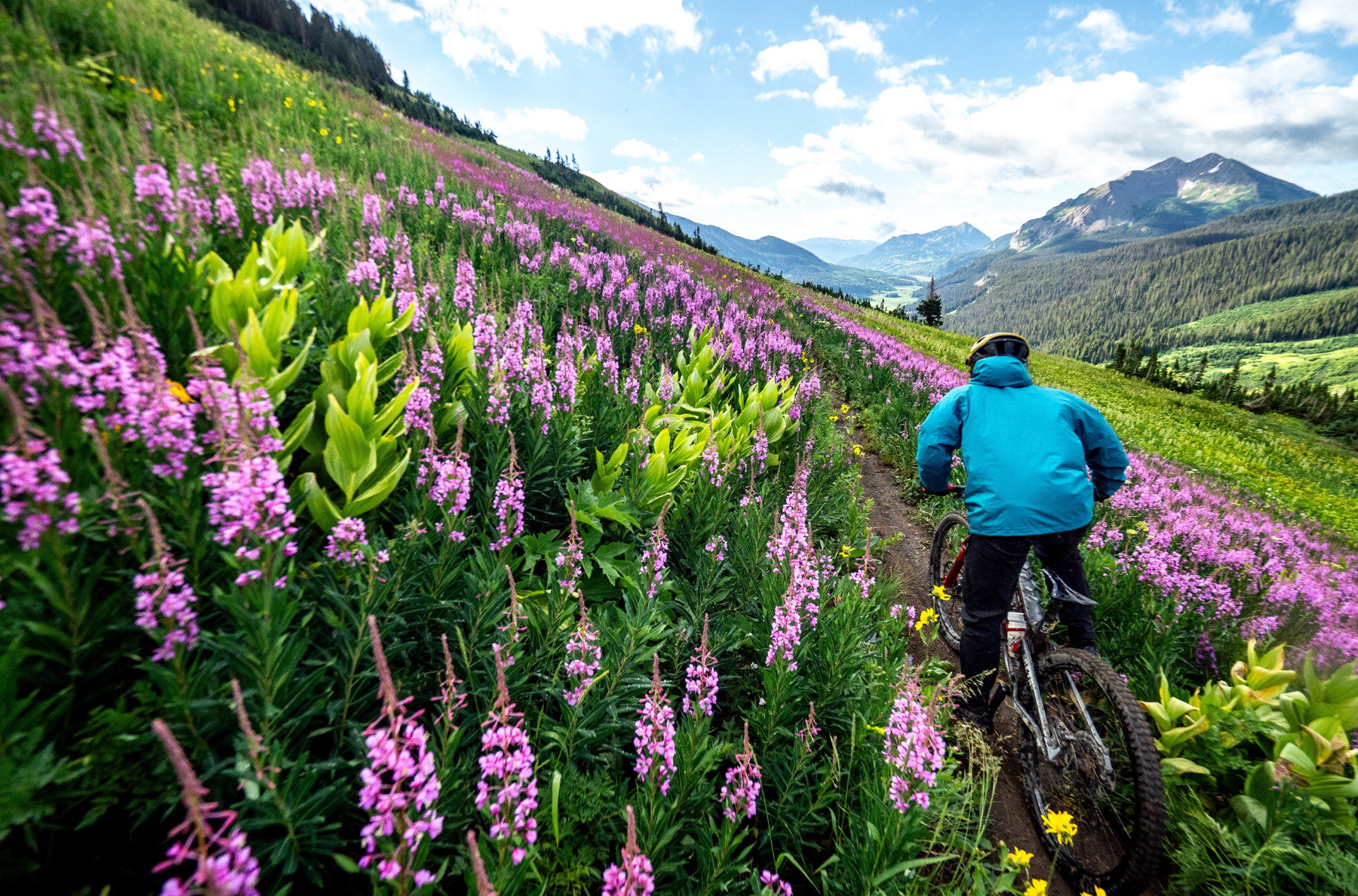
Dometic Patrol 35
MSRP: $229
Jed Doane: Coolers are an essential piece of gear for multi-day adventures, and options today range from basic raw styrofoam versions from the gas station to overbuilt, durable coolers that can cost hundreds of dollars. After some testing through the unfortunate heat waves that many of us are becoming accustomed to, the Dometic Patrol 35 has emerged as one of my favorites. It’s quite tough, keeps things cold for a long time, is easy to carry, and is relatively light and compact. Retailing at $229 (But available in the $150 range at the time of this writing), it’s also significantly cheaper than competitors like the Yeti Roadie while using much of the same technology.
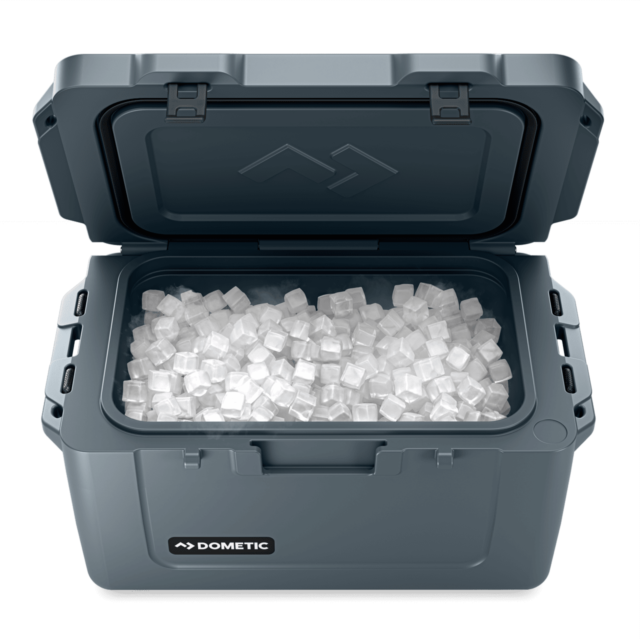
Rotomolded, overbuilt coolers aren’t worth it for everyone, but for those looking for top-class insulation, a long lifespan, and peace of mind, the Patrol is worth a close look. I like its easy closure and durable rubber latches, the ergonomic handles that stay out of the way but are easy to grab, and the removable wire mesh basket for some additional organization. I don’t have fancy high-tech ice packs from modern brands (I’ll usually just fill up an old plastic jug with water and freeze it), and I found that the Patrol kept things cool in my very hot car for several days.
Crankbrothers KLIC HV MINI FLOOR PUMP
MSRP: $69.99
Simon Stewart: A solid pump is as integral as any piece of gear for a bike rider, and as a result, there are countless options out there — from tiny pack pumps to mega floor pumps that’ll push enough air to seat tubeless tires. Crankbrothers alone has an impressive array of different pumps in their catalog; I’ve used many of them, and have always found them to be quality pumps. Lately, I’ve been spending time using the recently released Klic HV Mini floor pump, and I have to say, I’m really digging it.
The Klic HV Mini floor pump is positioned in between full-size floor pumps and more compact hand pumps. At 325 mm / 12.7” long, it most likely is too long for most hip packs. While this is unfortunate, it is totally understandable — it is marketed as a mini floor pump after all. I didn’t expect it to fit in my hip pack, and it didn’t, but weighing a scant 171 grams, had it fit, I would have had no problem putting it in there. Therefore, I think the Klic HV Mini is primarily a pack or vehicle pump; again, exactly how it is marketed.
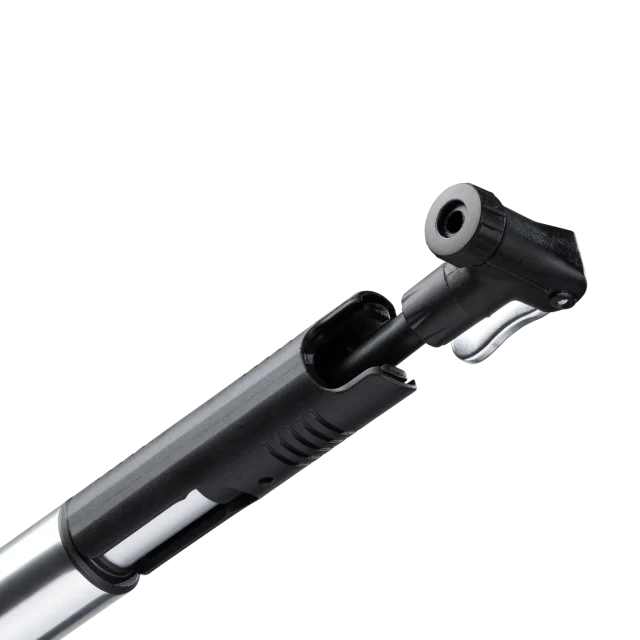
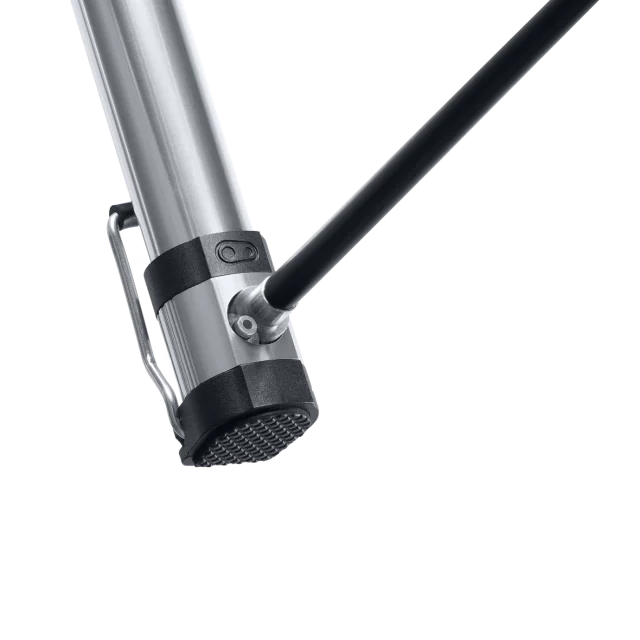
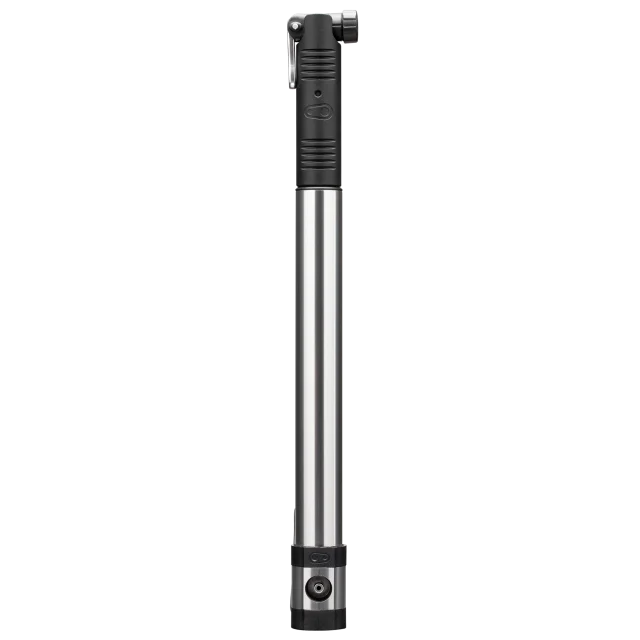
Now, the reason I would’ve liked to put the Klic HV Mini in my hip pack is that I love how well it goes about the simple business of putting air in a tire. Crankbrother’s Klic system of removable hoses is really slick; it uses a magnetized hose fitting that, for lack of a better term, “clicks” satisfyingly into the pump body. There’s a twisting collar that rotates to protect the pump body fitting from getting dirty when not in use, which also has very satisfying clicks. All of this clicking is great, but it’s the straightforward head design that I really appreciate as well. I prefer a simple push-on compression-style pump head over the thread-on style that Crankbrothers includes on many of their other models. The thread-on style can, on occasion, unthread the valve core during removal, resulting in an annoying and immediate complete loss of air, not to mention they are fiddly to install. Once on, though, the thread-on pump heads work great and are secure, but again, there’s always that chance that the valve core comes out when you take it off — I’ll take a well-designed push-on head any day.
When it comes to actually moving air, the Klic HV Mini excels for its size. The pump action is smooth and rewarding as the compact floor pump inflates mountain bike tires surprisingly fast. It is a high-volume pump so it does its best work up to around 40 psi, which is perfect for mountain bike tires. I think it goes without saying that the Klic HV Mini is not the best bet for skinny tires, although it did work great on my lower-pressure tubeless gravel setup.
I really would’ve appreciated this pump during my decade and a half of mountain bike guiding, where it would’ve been a fixture in my guide pack. Now that I nearly always wear a hip pack, the Klic HV Mini is a bit homeless, and raises the question as to whether it can replace the floor pump in my vehicle — it’s plenty good enough to warrant giving it a go, and its tiny footprint in comparison to a full-size floor pump is definitely appealing. That could make it a great choice for folks with smaller vehicles where space is at a premium, and I’ll see how well this minimalist pump holds up over time.
Costa Reeftron Pro sunglasses
MSRP: $284
Noah Eckhouse: I absolutely love these sunglasses. They are, perhaps, the best I’ve ever had. Two things jumped out at me the first time I put them on: fit and optical quality. The lightweight Costa glass lenses are super crisp and free of annoying edge effects, which can blur your peripheral vision. And the Reeftron Pro’s fit for my large face size is fantastic. They curve nicely around my head to give me great coverage in bright sunlight environments while still allowing enough airflow to keep from fogging. The semi-curved temples fit snugly on my head without creating ear strain, allowing me to wear them all day. I’ve been using them on a multi-month boating adventure around Haida Gwaii in northwestern British Columbia, and I’ve used them daily. The polarization helps me see the salmon in the water when we are fishing, and watch for rocks and other obstacles when entering a remote anchorage.
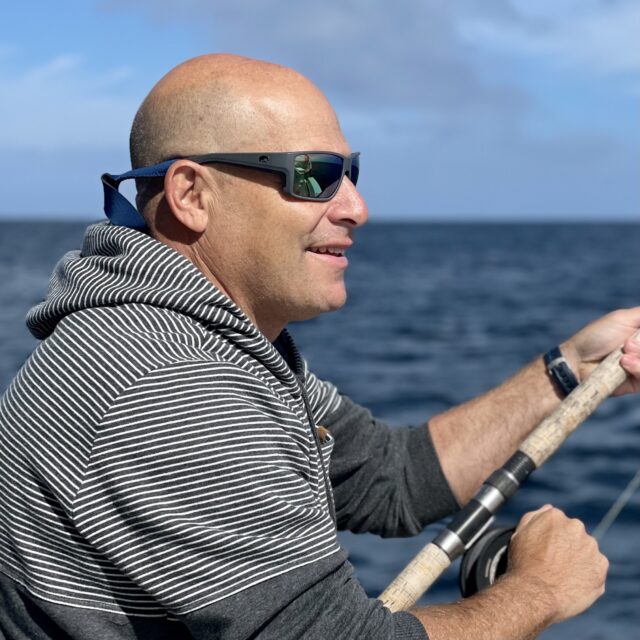
Deuter Aviant Duffel Pro 60
MSRP: $140
Kristin Sinnott: I am a bit obsessed with bags. I have way too many of them but I’m always on the lookout for better alternatives. The Aviant Duffel Pro 60 is exactly that — a better duffel. I’ve been using it for 6 months and I’ve really come to appreciate the variation in features the bag offers over its competitors. For starters, I like how the bag opens in a tall U shape over the longer side of the bag, unlike similar bags from Patagonia or Gregory. I have an easier time accessing items with this design, since the top of the bag doesn’t keep falling back over the opening. Another feature I appreciate is the stowaway pocket for the shoulder straps. Like the Patagonia Black Hole Duffles, the Aviant Duffel Pro’s shoulder straps unlock with a simple click, but having a separate pocket on the top of the bag allows me to stow the straps when checking my bag.
Other features I really appreciate are the separate side pockets for shoes, small items, or things like my son’s filthy, dirt-covered clothes. The internal compression straps help keep everything snug (and allow me to pack a lot more into the space), and the zipper pouch lets me easily stow the pack into itself for compressed storage.
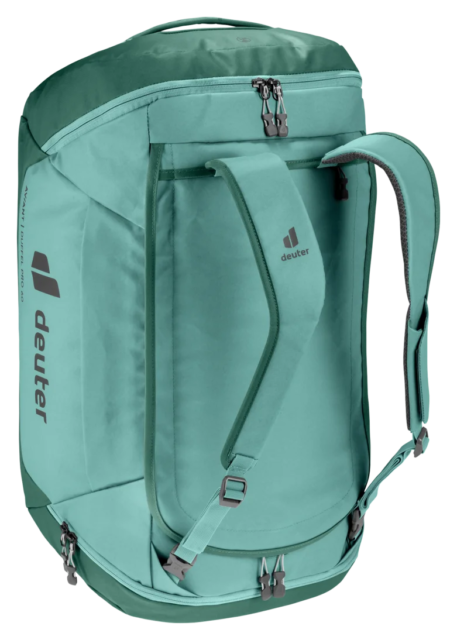
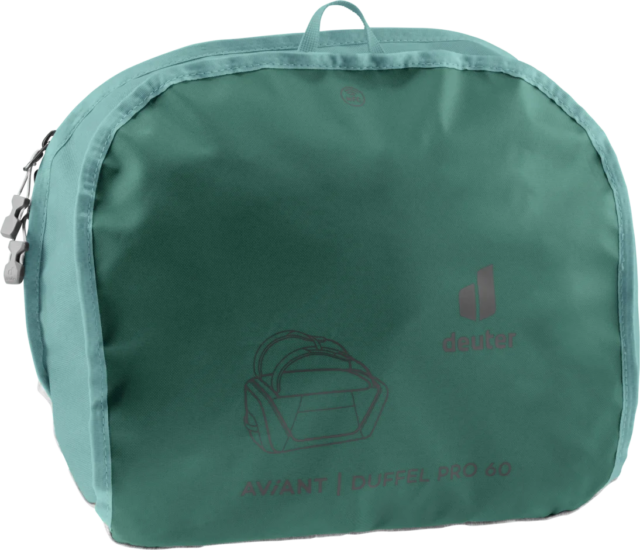
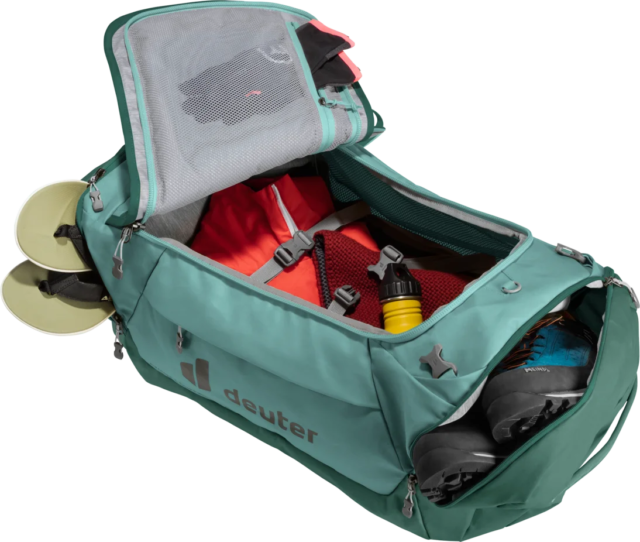
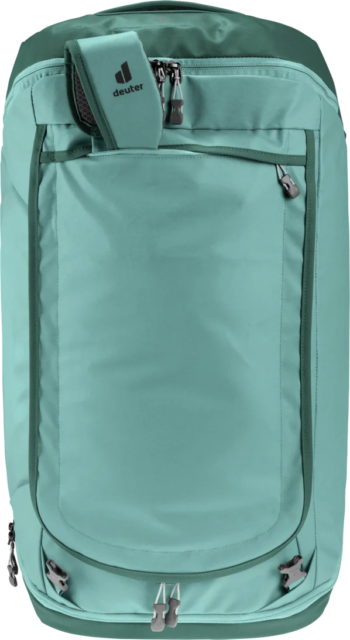
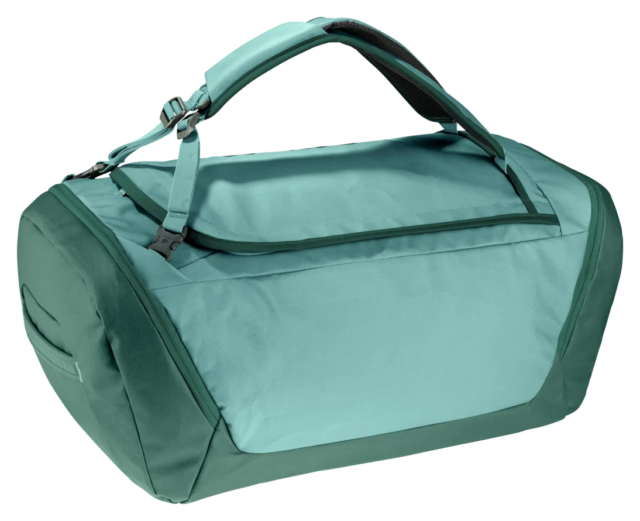
Velocio Women’s Anorak
MSRP: $389
Blister’s Measured Weight: 250 g
Reviewer: 5’9”, 167 lbs / 175 cm, 75.7 kg
Size Tested: XL
Kara: I didn’t really envision a day where a rain “anorak” would replace the rain jacket I always carry on my bike in case of summer storms or colder unexpected temperatures, but that day has officially come, thanks to Velocio’s well-thought-out and ultra-packable anorak. Over the past few weeks (now that our mountains’ predictably unpredictable afternoon storms have returned), I have really become a fan.
Velocio built this jacket with Pertex’s 3-layer “Shield Air” laminate, which is really light and air permeable. After being caught out in some very heavy rain storms, it has done an excellent job of keeping me dry. On the other end, it is also quite breathable and doesn’t feel super stifling while pedaling.
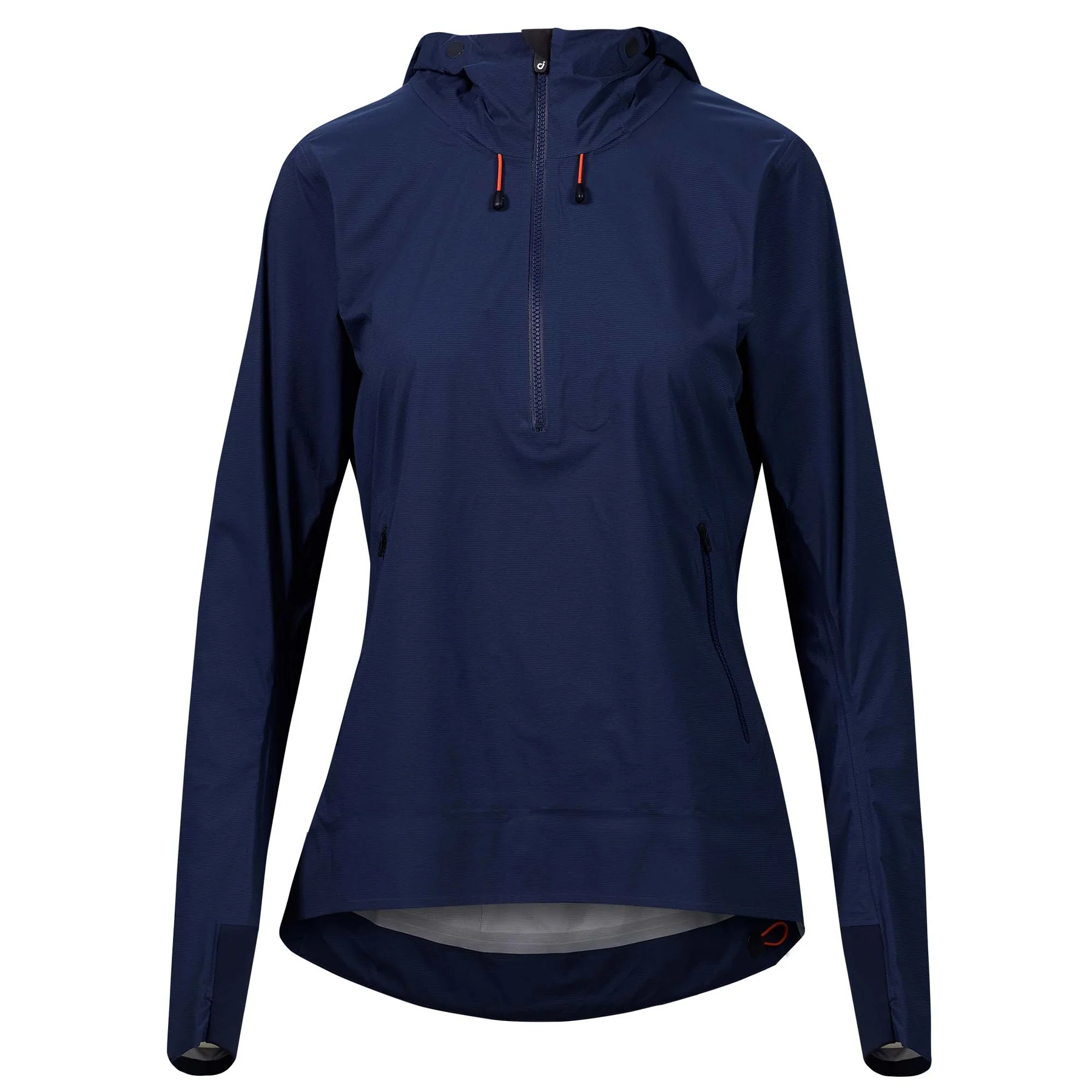
The fabric is reportedly rated at 10K for water resistance and 30K for breathability, and I can confirm that its breathability feels more impressive than its maximum water resistance. Even after pedaling in some sustained showers, I was impressed that I stayed quite dry, with just a little bit of humidity buildup. Due to its lower water resistance rating and ultralight construction, it wouldn’t be my top pick for, say, being in the rain for an entire day, but it’s so far kept me dry in several rain showers and its breathability and packability make it pretty ideal as the “just in case” layer for biking and hiking.
It has a huge hood that fits easily over my bike helmet, and it is easy to take on and off with my helmet on. With multiple points of adjustment on the hood, I can snug it down over a helmet or just my bare head. Its two pockets (1 front, 1 rear) provide just enough storage for this sort of shell, and the front one has been my go-to spot for stashing my phone in the rain.
Sizing-wise, it was a toss-up between a women’s Large and XL for me (I’m 5’9” / 175 cm), since I’ve found Velocio to fit a bit on the snug side for my taller frame and wider hips. In order to have ample space beneath the jacket and plenty range of motion, I opted for an XL. It definitely fits a bit more like one of my roomier ski jackets, rather than a snug fit like I have in the size Large Velocio Rain Jacket, but overall, I have been happy about that. It makes it really easy to take on and off, and feels very non-restrictive, while also being very comfortable.
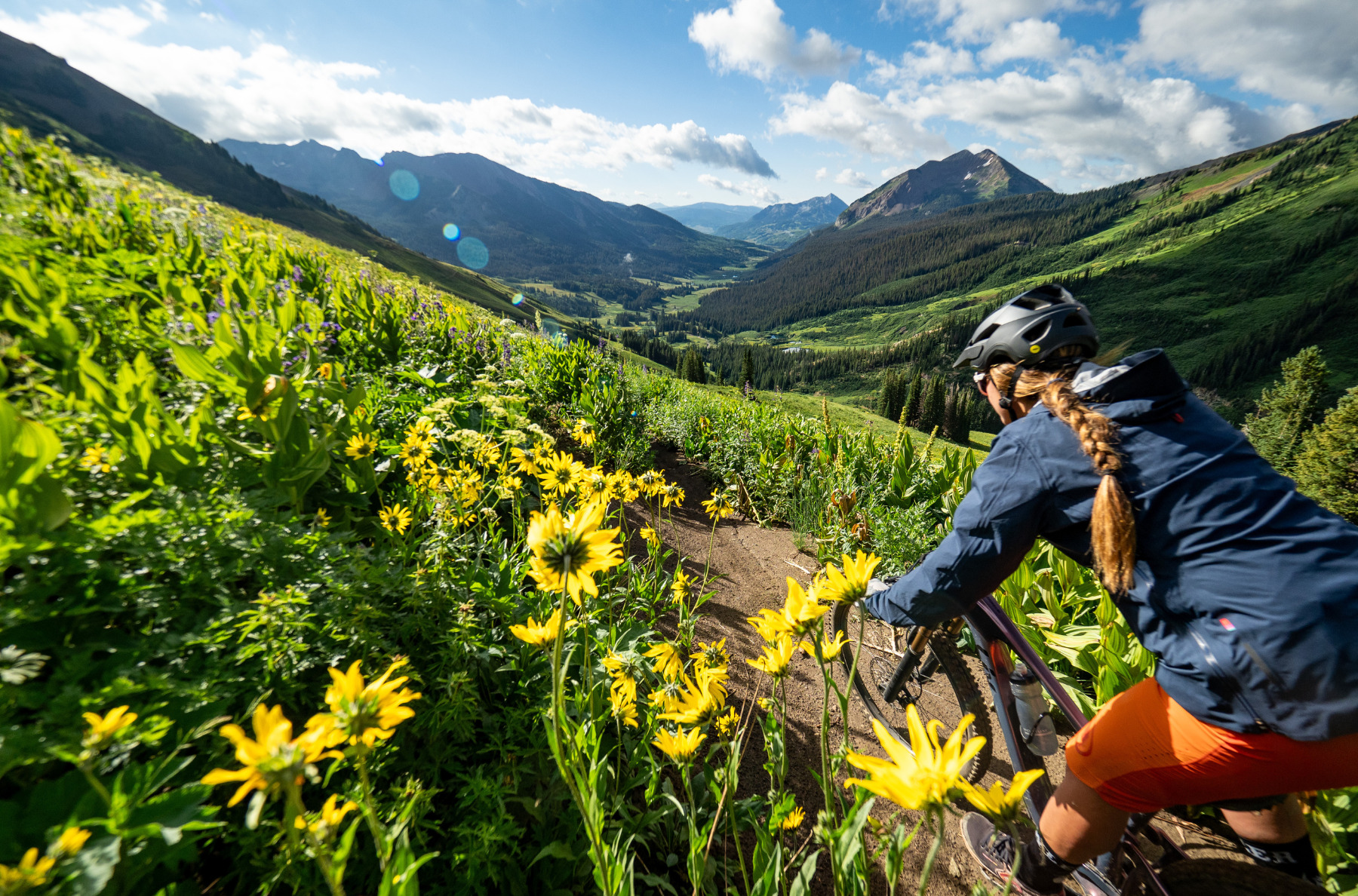

Overall, the features, fit, and overall style of the Velocio Anorak have me thinking it will work for a lot more than just days on the bike, and I can even see myself using it as a ski touring jacket for the warmer days. Its packability is especially impressive. Weighing only 251 g, I can get it down to the size of a 12 oz bottle, and easily fit it in my hip pack or bar bag. It also seems quite well made, given how light it is. There are lots of much cheaper alternatives out there, but the Velocio Anorak’s price isn’t all that out of the ordinary for an ultralight 3-layer shell with a high-end membrane, and typically, these sorts of 3-layer ultralight shells will outlast the cheaper 2.5- or 2-layer alternatives, especially when you’re frequently crumpling them in and out of packs / pockets, and working up a sweat in them. I’ll be using it a whole lot more going forward and will report back if I run into any issues.
Wild Rye Estelle Skirt
MSRP: $99
Size Tested: 8
Kara: My go-to move this summer after many hot rides has been ripping off my chamois ASAP and slipping into a pair of shorts, a skirt, or a skort. The Wild Rye Estelle Skirt has become a great option for this post-ride comfort, and its overall style makes it a flattering and comfortable piece that can be worn for all sorts of activities and applications. It has a cute front flap that wraps around and can be cinched at the waist for some adjustment in sizing.
My only complaint: I wish it was a skort. But because I love the fit and style so much, I have remedied this by wearing a pair of boyshorts (or swimsuit) beneath it, which works just as well.
The fabric is the same robust but comfortable material I have come to appreciate in Wild Rye’s baggy bike shorts, and it offers a good bit of stretch. It’s one of those items that works well for anything from a post-ride jaunt into town to a swim at the lake, making it a well-rounded item to bring along on a trip where you might wear it on anything from a hike to dinner. Overall, the Estelle Skirt has been one of my top-worn items throughout this summer.
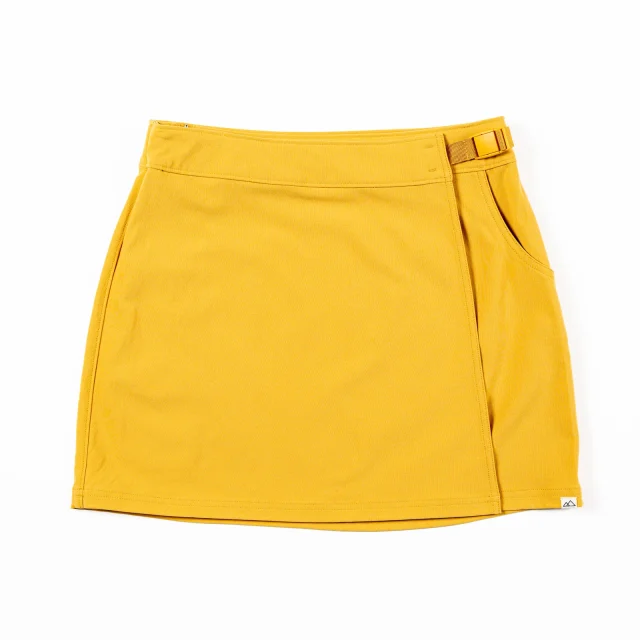
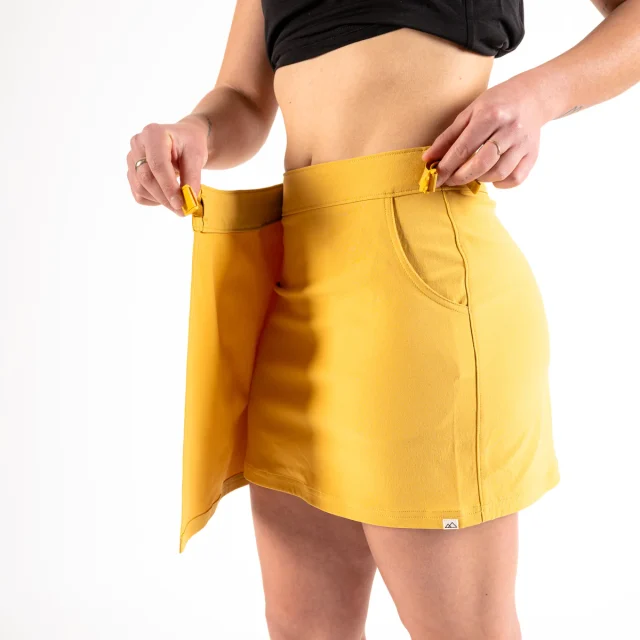

Laoganma over rice/noodles/sourdough/oatmeal/ saw me through many a quick meal in college, although I found it to be a bit intense on the salt side of things, as it was originally supposed to go over relatively tasteless mung bean “noodles”. Also pretty good with tomato and eggs (I suggest adding less salt in this case), and can be used similarly to seasoning in various stir-fry dishes as well! There’s also a great video going over how to make your own riff on LGM on Chinese Cooking Demystified (who make great videos on various Chinese cooking techniques and dishes).
Spicy XO sauce is another really tasty and versatile condiment.